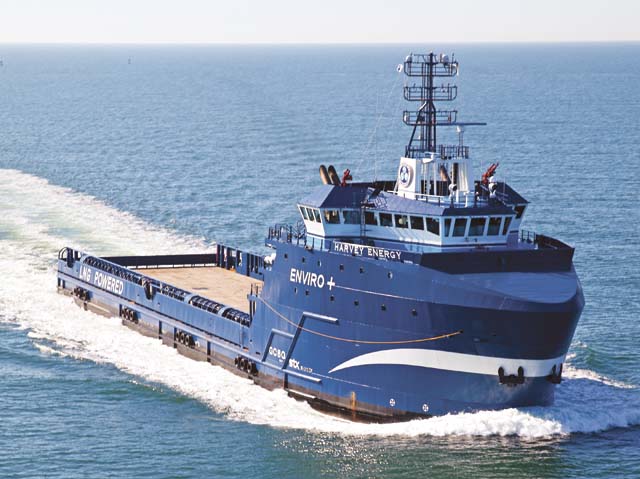Liquefied natural gas’s acceptance as a marine fuel is progressing in the U.S. although the going is slow because of regulatory hurdles and the effects of low oil prices.
When the price of oil was over $100 bbl., the price of LNG became more attractive as it’s generally lower priced. When oil prices fell precipitously over the past two years, LNG lost some of its popularity. Oil prices, however, have risen after the Organization of Petroleum Exporting Countries (OPEC) announced production cutbacks last week.
“LNG prices are far more stable,” Rafael Riva, business development manager, Lloyd’s Register, said during an LNG Bunkering Infrastructure session at the International WorkBoat Show in New Orleans last week. “LNG will gain in prominence between now and 2050.”
LNG-fueled vessels, especially larger vessels, have found acceptance in Europe, but in the U.S. the going is tougher. About the only success so far has been in 2015 when Harvey Gulf International Marine put the first dual-fuel vessel in the U.S. into service. The 302’x64′ OSV Harvey Energy has tankage for both diesel fuel and liquefied natural gas (LNG). (Harvey Gulf now has a total of six of the dual-fuel OSVs either in operation or under construction.)
To support the dual-fuel vessels, Harvey Gulf opened what it says is the first marine liquefied natural gas fueling terminal in North America. The New Orleans-based company inaugurated the LNG terminal at its operating base in Port Fourchon, La., by completing the first bunkering of the Harvey Energy there with the transfer of 43,000 gals. of fuel in about two hours and 15 minutes, according to Harvey Gulf officials. The terminal is designed to meet regulatory requirements and deliver LNG at a pumping rate of 550 gpm. The total on-site storage is approximately 270,000 gals., contained in three 90,000-gal. USG type “C” vacuum insulated tanks.
The U.S. Maritime Administration, among others, is interested in developing LNG-powered vessels on the inland waterways system. Marad is providing $730,000 to Pittsburgh Region Clean Cities (PRCC) to convert two towboat engines from diesel to diesel/natural gas. The demonstration project is designed to help expand the development and availability of natural gas conversion technology for smaller scale tug, tow, and harbor vessels. PRCC will collect air emissions data before and after the conversion, which will allow for operational and emissions comparisons. The Shearer Group, Seabrook, Texas, is the naval architectural firm on the project which involves the conversion of twin Cummins NTA855M diesel engines on the 56'x20' towboat Ron Chris to dual-fuel engines. The project was announced last year and is expected to take two years to complete.
“We’re currently going through the regulatory process,” Joshua Sebastian, an engineering manager at Shearer said at the WorkBoat Show panel. “We’re breaking new ground with the Coast Guard, and we’re using as much technology that is already proven.”
Sebastian said the project is not about reinventing the wheel. It’s about getting a boat in the water to prove how efficient LNG can be as a marine fuel. LNG burns cleaner than diesel. “We want to get a boat in operation,” he said. “Marad wants to get a boat in operation.”
In addition, engine companies are seeing the future and more of them are envisioning a future with dual fuel and, eventually, LNG-only marine engines on U.S.-flagged boats. “You’ll see engine companies coming out with fuel conversion packages,” Sebastian said.
A continuing question about LNG use as a marine fuel about infrastructure for inland river towboats that convert to LNG. David Grucza, director, drilling and marine, for Siemens U.S., said his company is working on that very problem. “We can provide a [module-style] facility that can fit on a 100 by 50 site and have it delivered in 38 to 40 weeks producing LNG,” he said. Siemens also has a bunker barge design for the inland waterways in development.





